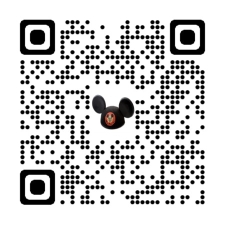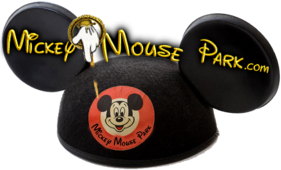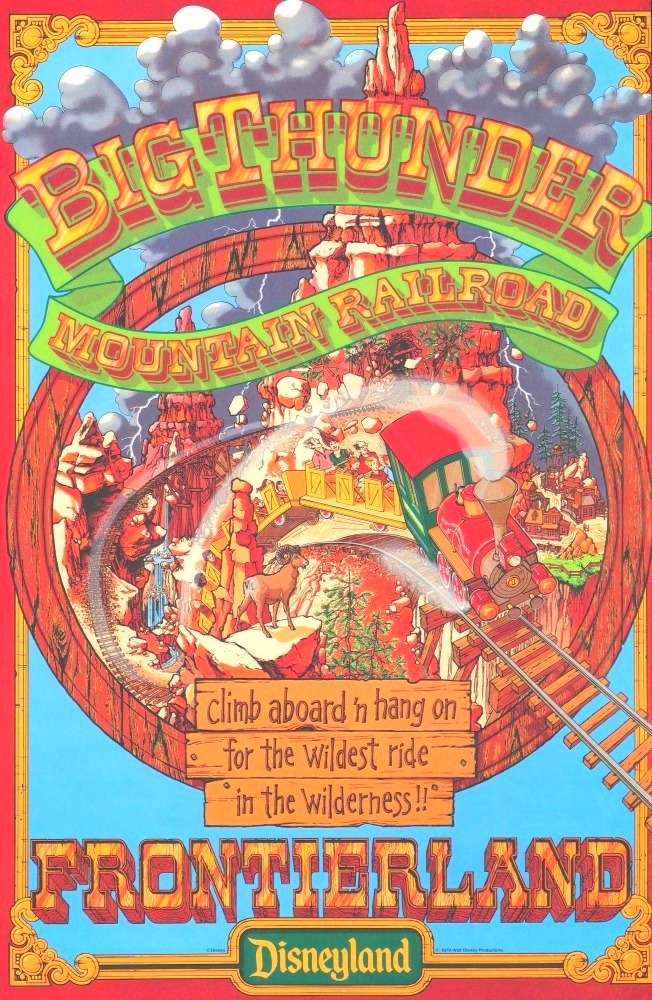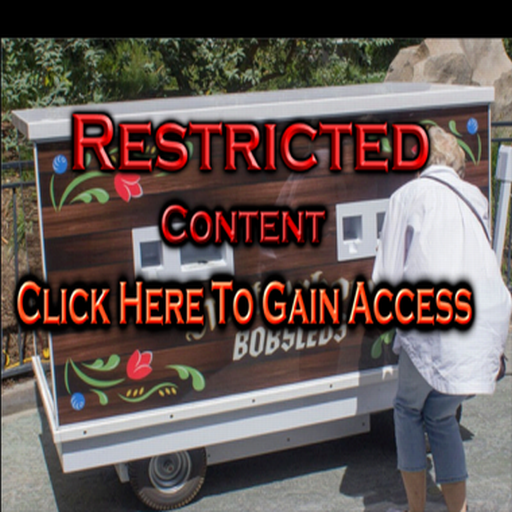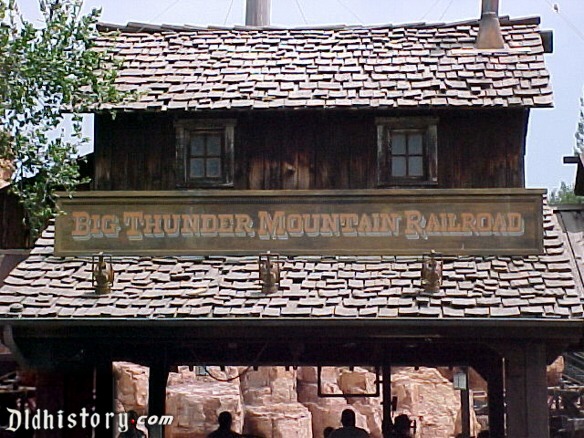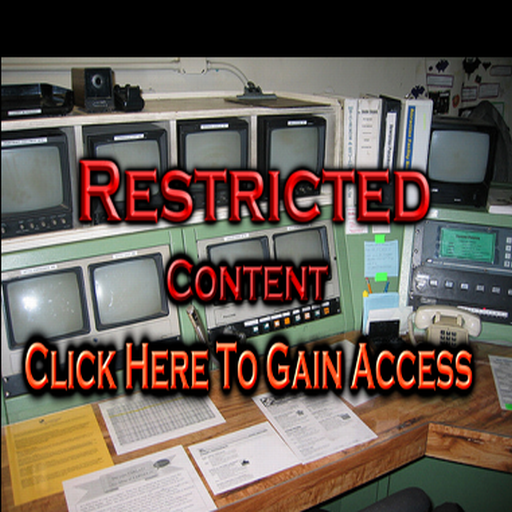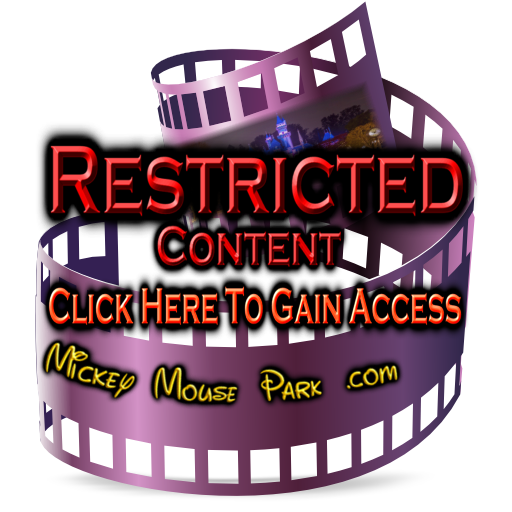
Designed by Tony Baxter based on scenery at Bryce Canyon National Park in Utah.
The petrified wood sculpture in Adventureland is the same shape as the Big Thunder Mountain Railroad look at it from the angle where you could see the sculpture and the ride.
Some of the machinery in the line of Big Thunder was used in The Apple Dumpling Gang.
The mountain is 104 feet tall. The upper buttes weigh up to 28 tons
The Sheriff's name on the Rainbow Ridge window is Walt's father in law
Names of the trains: U.R. Daring, I.M. Brave (replaced by I.M. Loco), I.M. Fearless, I.B. Hearty, U.B. Bold, U.R. Courageous
Sounds recorded from Big Thunder Mountain Railroad were used in the Indiana Jones Movie
Voices:
Prospector - Dallas McKennon
The Big Thunder Mountain Railroad attraction was manufactured by Walt Disney World Co. in September, 1979. The attraction is a roller coaster style ride with a height requirement of 40 inches and a track length of 2,671 feet. The track is of a tri-rail design, with two load rails, a third rail or "backbone", and three chain lifts. The track is divided into six zones, and each zone is sealed and air pressurized. Pneumatically activated and spring-released fin brakes slow or stop the trains, and linear induction motors use a brake fin to accelerate or decelerate the train.
The Big Thunder Mountain Railroad has six trains, which can operate with up to five trains at any given time. One train consists of one locomotive (9 feet 9 inches) and five railroad-style cars or passenger-carrying devices, each of which can carry up to 9 passengers, connected together at a length of 66 feet by a tow bar and two cables. Each car has 3 bench seats with a lap bar at each seat. Each car running gear consists of front and rear axle assemblies, each of which contains two bogie assemblies. The running gear for the locomotive consists of a front axle, guide, and upstop assembly, a floating axle assembly, and a rear axle assembly. The floating axle is non-weight bearing and contributes to the theme appearance of the locomotive. Each of the floating axle's upstop/guide wheels are retained by two bolts with safety wire backup. Trains can be dispatched at a minimum interval of 42 seconds, with a ride speed of 41 feet per second and a ride duration of 3 minutes, 15 seconds.
From Steve Birnbaum brings you the best of Disneyland 1982:
As roller coasters go, this one is relatively tame. It's short on the kind of steep climbs and precipitous drops that put hearts in throats and make stomachs protest, but long on tight curves that provoke squeals of glee and delighted laughs. The big deal on this ride is not the speed, however, or the thrills, but the scenery along the way-a pitch-black bat cave, giant stalactites and stalagmites, phosphorescent pools, a waterfall, a canyon inhabited by coyotes, a natural-arch bridge that affords fine views over the Big Thunder landscape, mine walls ready to cave in, and a quaint mining town. The show is almost the equal of New Orleans Square's Pirates of the Caribbean, though you might think it's even better because it starts in the queue area. There, in the aforementioned community which boasts two hotels, a newspaper, and a dance hall, in addition to its saloon and general store-life goes on usually in full view. If you listen closely, you'll hear a local barmaid flirting with a miner to the accompaniment of such songs as "Red River Valley" and "Listen to the Mockingbird." As you proceed toward the loading area, the walls on either side are made of about a hundred tons of real gold ore from Rosamond, California- brownish-colored stone that sold for around $80 a ton when the attraction was built, and purplish rocks that cost $120 a ton. The Silver Queen Mine (in the same former mining center) also yielded a real, ten-foot-tall stamp mill designated BIG THUNDER MINE 1880-rare because most are about twice the size. At the time it was spotted by the Disney scouts, it was owned by four different partners, each of whom had to be contacted before the sale could go through. In the loading area, there's a single-bore compressor engine that really works, from Tonopah, Nevada. Elsewhere around the attraction, there's a scattering of corrugated tin, most of it found on the roofs of mining shacks in the Southwest. The steam engine that sits just below the town was used in the 1978 Disney feature film, Hot Lead, Cold Feet, which starred Don Knotts, Jim Dale, Karen Valentine, Darrin McGavin, and Jack Elam. The Pat Burke identified on one of the packing crates helped scour the swap meets, abandoned mines, and even museums in Colorado, Minnesota, Nevada, and Wyoming, where the thousands of dollars of authentic mining equipment in the queue area (and the attraction itself) were located. In addition to the stamp mill and the com- pressor, there's also a 1,200-pound cogwheel once used to break down the ores; an ore car that once hauled gold in Nevada (seen here at the commencement of the earthquake scene); a 400- pound ore bucket; a drill press powered by hand; and a huge winch motor from Tonopah, Nevada (that's the machine that looks as if it's hauling the train up the second lift); not to mention a good many large cogs, gears, hand tools, pulleys, blocks, an alarm bell once used as a means of communication between miners, and a dredge shovel.As for the mountain itself, it was entirely Disney- made, of steel and cement by the ton and of paint by the thousands of gallons-3,000 to 4,000 gallons, to be more exact-with the labor of a whole crew of diversely skilled rock makers, who layered cement and paint, threw stones on the product, kicked dirt at it, and banged on it with sticks and picks to realize the designs of art director Tony Baxter, the former Tomorrowland-attractions host who is also responsible for much of Fantasyland's new look. Inspired by Utah's Bryce Canyon, and named in reference to an old Indian legend about a certain sacred mountain in Wyoming that would thunder whenever white men took out its gold, it took seven years to plan, including two years to build, and cost some $16 million-almost as much as all of Disneyland in 1955. The painting of the 92 acres of rock surface was done under the supervision of Bob Jolly, whose other credits include sets for the films The King and I, South Pacific, The Diary of Anne Frank, and The Greatest Story Ever Told. Incidentally, while the ride itself is similar in many respects to the one offered at Walt Disney World's Big Thunder Mountain Railroad, there are several small differences both inside and out. In Walt Disney World's Magic Kingdom, for instance, you won't find the wonderfully scenic queue area that prefaces the ride here. But the Florida mountain is much larger, rising to a height of 197 feet, in keeping with the larger scale of that park. Also, instead of the handsome little mining town that greets passengers at the end of Disneyland's trip, WDW's Big Thunder Mountain Railroad riders have a flooded mining town full of real-looking chickens, donkeys, a rainmaker, and a sinking saloon, midway through the trip. There's no warning sign, but pregnant women and guests who suffer from a heart condition, motion sickness, weak backs, and other physical limitations are not permitted to ride the attraction. Children must be at least three years old and at least 39 inches tall to board the trains, and those under seven must be accompanied by an adult.About your timing: Since this is a very popular ride, try to visit first thing in the morning, during a parade, or just before park closing, when the lines are generally shorter. For the best of both worlds, ride twice-once by day, when you can see the scenery much better, and again after dark, when there's the added pleasure of hurtling through the cool night.
Steven Spielberg recorded the rumbles and clanking of Big Thunder Mountain Railroad for the mine-car chase scene in "Indiana Jones and the Temple of Doom."
November 2012 ABC announced plans to create a TV show based on Big Thunder Mountain Railroad

 Click Here To Gain Access
Click Here To Gain Access
 Click Here To Gain Access
Click Here To Gain Access
 Click Here To Gain Access
Click Here To Gain Access
 Click Here To Gain Access
Click Here To Gain Access
 Click Here To Gain Access
Click Here To Gain Access
 Click Here To Gain Access
Click Here To Gain Access
 Click Here To Gain Access
Click Here To Gain Access
 Click Here To Gain Access
Click Here To Gain Access
 Click Here To Gain Access
Click Here To Gain Access
 Click Here To Gain Access
Click Here To Gain Access
 Click Here To Gain Access
Click Here To Gain Access
 Click Here To Gain Access
Click Here To Gain Access
 Click Here To Gain Access
Click Here To Gain Access














